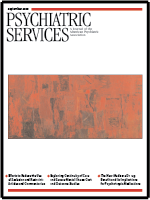Special Section on Seclusion and Restraint: The Economic Cost of Using Restraint and the Value Added by Restraint Reduction or Elimination
Abstract
OBJECTIVE: The purpose of this study was to calculate the economic cost of using restraint on one adolescent inpatient service and to examine the effect of an initiative to reduce or eliminate the use of restraint after it was implemented. METHODS: A detailed process-task analysis of mechanical, physical, and medication-based restraint was conducted in accordance with state and federal restraint requirements. Facility restraint data were collected, verified, and analyzed. A model was developed to determine the cost and duration of an average episode for each type of restraint. Staff time allocated to restraint activities and medication costs were computed. Calculation of the cost of restraint was restricted to staff and medication costs. Aggregate costs of restraint use and staff-related costs for one full year before the restraint reduction initiative (FY 2000) and one full year after the initiative (FY 2003) were calculated. Outcome, discharge, and recidivism data were analyzed. RESULTS: A comparison of the FY 2000 data with the FY 2003 data showed that the adolescent inpatient service's aggregate use of restraint decreased from 3,991 episodes to 373 episodes (91 percent), which was associated with a reduction in the cost of restraint from $1,446,740 to $117,036 (a 92 percent reduction). In addition, sick time, staff turnover and replacement costs, workers' compensation, injuries to adolescents and staff, and recidivism decreased. Adolescent Global Assessment of Functioning scores at discharge significantly improved. CONCLUSIONS: Implementation of a restraint reduction initiative was associated with a reduction in the use of restraint, staff time devoted to restraint, and staff-related costs. This shift appears to have contributed to better outcomes for adolescents, fewer injuries to adolescents and staff, and lower staff turnover. The initiative may have enhanced adolescent treatment and work conditions for staff.



